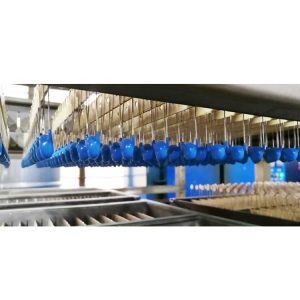
Ceramic capacitors are electronic components used to store electrical charge. They are made by extruding high dielectric constant capacitor ceramic barium titanate, then make titanium oxide into round tubes, discs, or plates, and plating silver on the ceramics as electrodes.
Ceramic capacitors can be classified according to:
Dielectric material: It can be divided into high dielectric constant capacitors and low dielectric constant capacitors.
Working frequency: It can be divided into high-frequency capacitors and low-frequency capacitors. High-frequency capacitors are used in circuits with higher operating frequencies, while low-frequency capacitors are limited to bypass or DC blocking in circuits with lower operating frequencies.
Working voltage: It can be divided into high voltage capacitors (above 1KVDC) and low voltage capacitors (below 500VDC).
Shape and structure: It can be divided into disc shape, tube shape, through-center type, cylindrical shape, and laminated type, among others.
Type: Ceramic capacitors are classified according to their ceramic material and dielectrics, and are divided into Class I capacitors, Class II capacitors, and Class III capacitors.
- Class I include NP0, SL0, C0G, and have excellent capacitance stability with little change in temperature, voltage, time, etc.
- Class II include X7R, X5R, Y5U, Y5V, 2X1, and have poor capacity stability, varying greatly with temperature, voltage, and time. They are generally used in applications that do not require high capacity stability, such as filtering.
- Class III include Y5V, 2F4, EIA RS-198.